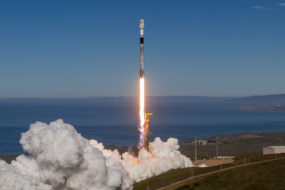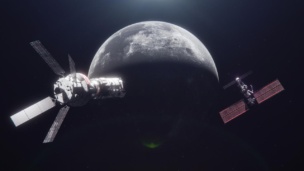IM-1 loves you to the Moon and back.
SpaceX is slated to launch the Intuitive Machines Nova-C lunar lander aboard Falcon 9 early Valentine’s Day morning as it attempts to become the first commercial spacecraft to soft-land on the lunar surface and the first US vehicle to accomplish the feat since Apollo 17 in 1972.
The mission will transport NASA payloads to the lunar surface under the Commercial Lunar Payload Services (CLPS) program. The agency is paying Intuitive Machines $118M for the delivery.
Intuitive Machines’ launch follows last month’s CLPS mission by Astrobotic, which ended in heartbreak after a fuel leak on the Peregrine spacecraft derailed its trip to the Moon.
Mission details: The 675-kg Nova-C lander, named Odysseus, is targeting a landing on Feb. 22 at the Malapert A crater at the lunar south pole, next door to a potential landing site for NASA’s Artemis III mission. The company expects its lander and the payloads on board to operate for seven days until the long lunar night sets in.
Payloads: The lander is designed to transport up to 130 kg to the lunar surface. The cargo for this mission includes half a dozen NASA instruments and a host of commercial payloads, including artwork by Jeff Koons and Columbia sportswear material.
- Because everyone’s an influencer these days, Nova-C will shoot off a camera moments before landing, dubbed EagleCam and built by Embry-Riddle faculty and students, to snap images of touch down.
What’s next: It’s a busy year for NASA’s CLPS initiative, which has four additional lunar landings scheduled in 2024.




